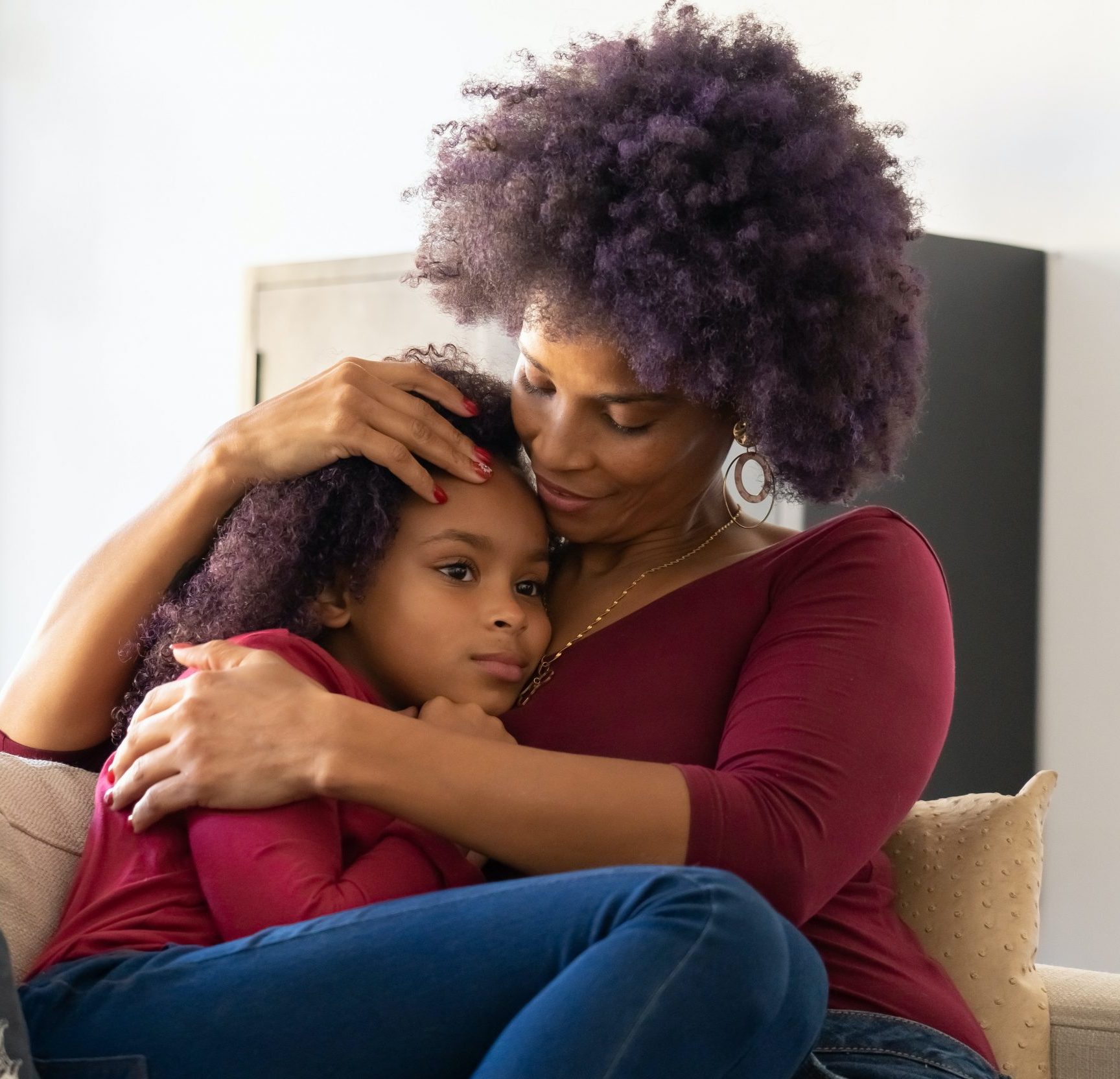
Many children have fears and worries, and may feel sad and hopeless from time to time. Strong fears may appear at different times during development. For example, toddlers can often become very distressed about being away from their parents, even if they are safe and cared for. Although fears and worries are typical in children, persistent or extreme forms of fear and sadness could be due to anxiety or depression. Because the symptoms primarily involve thoughts and feelings, they are sometimes called internalizing disorders.
Signs and symptoms
Anxiety
When a child does not outgrow the fears and worries that are typical in young children, or when there are so many fears and worries that they interfere with school, home, or play activities, the child may be diagnosed with an anxiety disorder. Anxiety is not one disorder but rather a category of conditions.
- Separation anxiety disorder: Being very afraid when away from parents, sometimes with extreme fear of the potential for being separated.
- Phobia: Having extreme fear about a specific thing or situation, such as dogs, insects, or going to the doctor.
- Social anxiety disorder: Being very afraid of going to places where there are people, such as school.
- Generalized anxiety disorder: Experiencing excessive, ongoing anxiety and worry that are difficult to control and interferes with day-to-day activities, but not necessarily specific to a particular situation or context.
- Panic disorder: Having repeated episodes of sudden, unexpected, intense fear that come with symptoms like heart pounding, having trouble breathing, or feeling dizzy, shaky, or sweaty.
Anxiety may present as fear or worry but can also make children irritable and angry. Anxiety symptoms can also include trouble sleeping, as well as physical symptoms like fatigue, headaches, or stomachaches. Some anxious children keep their worries to themselves and, thus, the symptoms can be missed.
Depression
Occasionally being sad or feeling hopeless is a part of every child’s life. However, some children feel sad or are uninterested in things that they used to enjoy, or feel helpless or hopeless in situations they are able to change. When children feel persistent sadness and hopelessness, they may be diagnosed with depression. Like anxiety, depression is not one disorder but a category of conditions. Major depressive disorder is the most common.

Examples of behaviors often seen in children with depression include:
- Feeling sad, hopeless, or irritable a lot of the time.
- Not wanting to do or enjoy doing fun things.
- Changes in eating patterns—eating a lot more or a lot less than usual.
- Changes in sleep patterns—sleeping a lot more or a lot less than normal.
- Changes in energy – being tired and sluggish or tense and restless a lot of the time.
- Having a hard time paying attention.
- Feeling worthless, useless, or guilty.
- Showing self-injury and self-destructive behavior.
When a child does not outgrow the fears and worries that are typical in young children, or when there are so many fears and worries that they interfere with school, home, or play activities, the child may be diagnosed with an anxiety disorder.
Extreme depression can lead a child to think about suicide or plan for suicide. For youth ages 10-14 years, suicide is the second leading cause of death.
Some children may not talk about their helpless and hopeless thoughts and may not appear sad. Depression might also cause a child to make trouble or act unmotivated, causing others not to notice that the child is depressed or to incorrectly label the child as a troublemaker or lazy. Depression can also cause children to act irritable or angry. Depression and anxiety often co-occur among children, adolescents, and adults.

Managing symptoms: staying healthy
Good physical and mental health is important for all children and is especially important for children with depression or anxiety. In addition to getting the right treatment, practicing healthy lifestyle behaviors can play a role in managing symptoms of depression or anxiety. Here are some healthy behaviors that may help:
- Having a healthy eating plan centered on fruits, vegetables, whole grains, legumes (for example, beans, peas, and lentils), lean protein sources, and nuts and seeds.
- Participating in physical activity for at least 60 minutes each day.
- Getting the recommended amount of sleep each night based on age.
- Practicing mindfulness or relaxation techniques.
Treatment for anxiety and depression
The first step to treatment is to talk with a health care provider such as your child’s primary care provider, or a mental health specialist, about getting an evaluation.
- The United States Preventive Services Taskforce recommends screening for anxiety in children ages 8 to 18 years and for depression in adolescents ages 12 to 18 years.
- Some of the signs and symptoms of anxiety or depression in children could be caused by other conditions, such as trauma.
- It is important to get a careful evaluation to get the best diagnosis and treatment.
- Consultation with a health provider can help determine if medication should be part of the treatment.

Check out our podcast to gain insight into how parents and caregivers can unknowingly reinforce their child’s fears by altering routines or providing excessive reassurance, also known as “accommodation.” Learn how to strike the balance between empathy and empowerment.
A mental health professional can develop a therapy plan that works best for the child and family.
- Behavior therapy includes child therapy, family therapy, or a combination of both. The school can also be included in the treatment plan. For very young children, involving parents in treatment is key.
- Cognitive-behavioral therapy is one form of therapy that is used to treat anxiety or depression, particularly in older children. It helps the child change negative thoughts into more positive, effective ways of thinking and coping, leading to more effective behavior.
- Behavior therapy for anxiety may involve helping children cope with and manage anxiety symptoms while gradually exposing them to their fears to help them learn that bad things do not occur.
Treatments can also include a variety of ways to help the child feel less stressed and be healthier like nutritious food, physical activity, sufficient sleep, predictable routines, and social support.
Get help finding treatment
Pediatricians and other health care professionals that interact regularly with children can help support children’s mental health and work with families to identify when specialist care is needed for diagnosis and treatment. To find a pediatrician near you, visit HealthyChildren.org, a service of the American Academy of Pediatrics (AAP) practice organization.
Families can also seek out referrals for a mental health provider through multiple avenues, including the child’s school, a primary care provider, or through health insurance. They can also ask for advice from trusted family or friends who may have some experience with providers in the local area.
If you need insurance coverage, learn more about enrolling in Medicaid, Children’s Health Insurance Program (CHIP), or a Marketplace plan at HealthCare.gov. If your child does not qualify for insurance coverage, you can get low-cost health care at a nearby community health center.
Mental health specialists
Here are additional tools to find a healthcare provider familiar with treatment options:
- Psychologist Locator, a service of the American Psychological Association (APA) Practice Organization.
- Child and Adolescent Psychiatrist Finder, a research tool by the American Academy of Child and Adolescent Psychiatry (AACAP).
- Find a Cognitive Behavioral Therapist, a search tool by the Association for Behavioral and Cognitive Therapies.
- If you need help finding treatment facilities, visit FindTreatment.gov.
What CDC is doing
Prevention
It is not known exactly why some children develop anxiety or depression. Many factors may play a role, including biology and temperament. But it is also known that some children are more likely to develop anxiety or depression when they experience the following: trauma or stress; violence, abuse, or neglect; being bullied or rejected by other children; or when their own parents have anxiety or depression.
Although these factors appear to increase the risk for anxiety or depression, there are ways to decrease the chance that children experience them.
Source: National Center on Birth Defects and Developmental Disabilities, Centers for Disease Control and Prevention | Anxiety and Depression in Children, https://www.cdc.gov/children-mental-health/about/about-anxiety-and-depression-in-children.html | Public domain. Last reviewed October 2024.
Use of this material does not imply endorsement by CDC, ATSDR, HHS or the United States Government of CHC or CHC’s services.





